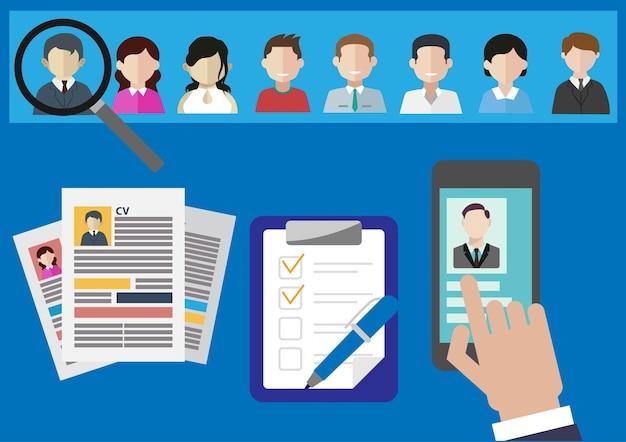In the dynamic and ever-evolving field of human resources, ensuring accuracy and precision is crucial. Organizations rely on data and research to make informed decisions about their workforce, and this is where the concepts of reliability and validity come into play.
Reliability refers to the consistency and stability of data or measurement tools over time. It answers the question, “Can we trust the results?” On the other hand, validity concerns the extent to which a measure accurately captures what it intends to measure. It addresses the question, “Does this measure what it claims to measure?”
In this blog post, we will dive into the concepts of reliability and validity in the context of human resources. We will explore what makes good internal validity, how to test for reliability, and examine practical examples of these concepts in action. Additionally, we will touch upon construct validity and discuss the factors that can affect internal validity. So, let’s delve into the realm of reliability and validity to understand their significance in harnessing accurate HR insights.

What is Reliability and Validity in Human Resources?
Reliability and validity are like the dynamic duo of human resources. They work hand in hand to ensure that the methods and tools used in HR are trustworthy and dependable. So, let’s dive into the fascinating world of reliability and validity and uncover their true superpowers!
The Reliability Avengers
Reliability can be thought of as the superhero of consistency. It measures the extent to which a tool or method consistently produces the same results over time. Imagine employing a psychometric test to assess job applicants. You’d want to make sure that the test yields consistent results each time it is administered. After all, you don’t want your candidates to be superheroes one day and mere sidekicks the next.
The Validity Superheroes
Validity, on the other hand, is the superhero of accuracy. Validity measures the extent to which a tool or method actually measures what it claims to measure. Just as Superman’s x-ray vision actually lets him see through walls, you want your HR tools to accurately assess the qualities or skills they are designed to measure. Otherwise, you might end up with a team of secret agents that can’t even find their own car keys.
Sidekick or Superhero? It’s All about Reliability
Now, let’s dig a little deeper into reliability. There are several types of reliability, each with its own special power. Test-retest reliability, for example, measures the stability of a tool or method by administering it twice to the same group of individuals. If the results closely match, you can rest easy knowing that your tool is a reliable sidekick.
Another type of reliability is internal consistency reliability. This measures how well different items in a tool or method hang together like a tight-knit superhero team. If the items are all focused on the same construct, then the tool is reliable. It’s like Captain America leading the Avengers to victory – all for one and one for all!
Unmasking the Validity Heroes
Validity also has its own band of heroes. Content validity ensures that the elements of a tool are relevant and representative of the construct being measured. It’s like Wonder Woman’s lasso of truth revealing the true essence of a candidate’s skills or competencies. If you’re assessing problem-solving skills, for instance, the questions should actually test problem-solving abilities, not whether someone prefers pizza or tacos.
Criterion-related validity, on the other hand, is all about relating to the real world. It assesses whether a tool predicts or correlates with relevant outcomes. If your Wonder Woman-inspired assessment accurately predicts job performance, you’ll be able to assemble a team of superheroes capable of tackling any challenge that comes their way.
Reliability and Validity: The Power Duo
Reliability and validity are inseparable partners in crime-fighting. Together, they ensure that your HR tools and methods are not just random gadgets but actually have some real-world effectiveness. Like Batman and Robin or peanut butter and jelly, they complement each other perfectly.
So, the next time you’re analyzing candidate assessments or evaluating employee performance, remember the reliability and validity duo. They are the unsung heroes of human resources, working behind the scenes to give you the information you need to build a team of Avengers-level greatness.
Sources:
- Example Source 1: Reliability and Validity in HR
- Example Source 2: The Role of Validity and Reliability in HR

FAQ: Reliability and Validity in Human Resources
What is reliability and validity in the context of human resources
Reliability and validity are essential concepts in the field of human resources that help ensure the accuracy and credibility of assessments, tests, and other measurement tools used to evaluate job candidates, employees, or various HR processes. Let’s delve deeper into these concepts!
What makes good internal validity
Good internal validity refers to the degree to which the results of a study or experiment accurately reflect the cause-and-effect relationship being investigated. In other words, it ensures that the conclusions drawn are reliable and can be attributed to the factors being studied and not to any confounding variables. To establish good internal validity, researchers need to design experiments with proper control groups, randomization, and careful monitoring of potential influences.
How do you test for reliability
Testing for reliability involves assessing the consistency and stability of a measurement tool or assessment over time or across different conditions. One common way to test reliability is through the use of test-retest reliability, where the same individuals are tested on two separate occasions, and the results are compared. Another method is inter-rater reliability, which evaluates the consistency of ratings or observations made by different raters or observers. Cronbach’s alpha is a statistical measure often used to determine internal consistency reliability when dealing with multi-item scales or surveys.
What is an example of reliability
Let’s take a relatable example to understand reliability better. Imagine you’re a hiring manager and have a candidate taking a pre-employment test. If the test is reliable, it means that if the candidate were to take the same test on a different day or in a different setting, they would achieve a similar score. Reliability is like a dependable friend who doesn’t fluctuate much, ensuring consistent results regardless of when or where the test is administered.
What is an example of construct validity
Construct validity assesses the extent to which a measurement tool or assessment actually measures the construct or characteristic it claims to measure. An example of construct validity in human resources would be a leadership assessment designed to evaluate the leadership skills of potential managers. To establish construct validity, researchers would need to demonstrate that the assessment accurately measures the specific aspects of leadership they intend to capture, such as visionary thinking, effective communication, or problem-solving abilities.
What factors affect internal validity
Several factors can influence internal validity and potentially compromise the accuracy of research findings. One major factor is selection bias, where the composition of the study sample is not representative of the entire population being studied. Another factor is the presence of confounding variables, which are external factors that may unintentionally influence the observed relationship between variables. Additionally, inadequate randomization, measurement errors, or participant attrition can also impact internal validity. It’s crucial for researchers to address and minimize these factors to maintain the integrity of their findings.
Remember, reliability and validity are like the dynamic duo of human resources. They work hand in hand to ensure that the measurements and assessments used in the field are trustworthy, consistent, and valid. By understanding and applying these concepts, HR professionals can make better-informed decisions, leading to more effective recruitment, selection, and overall people management practices.
So, the next time you encounter reliability and validity in your HR endeavors, just think of them as your secret weapons against uncertainty and guesswork!
Now that you’re familiar with the ins and outs of reliability and validity, let’s move on to explore some other fascinating aspects of the world of human resources. Stay tuned!
